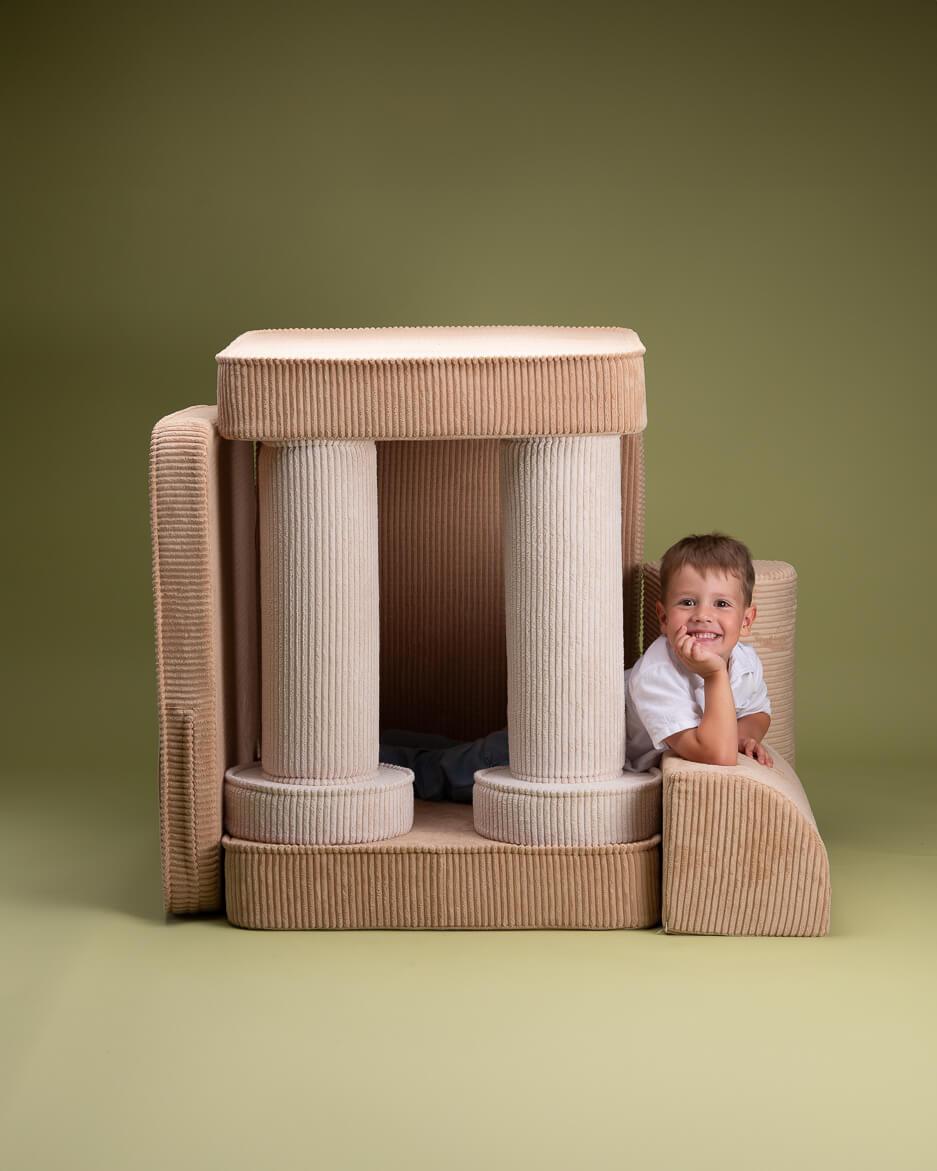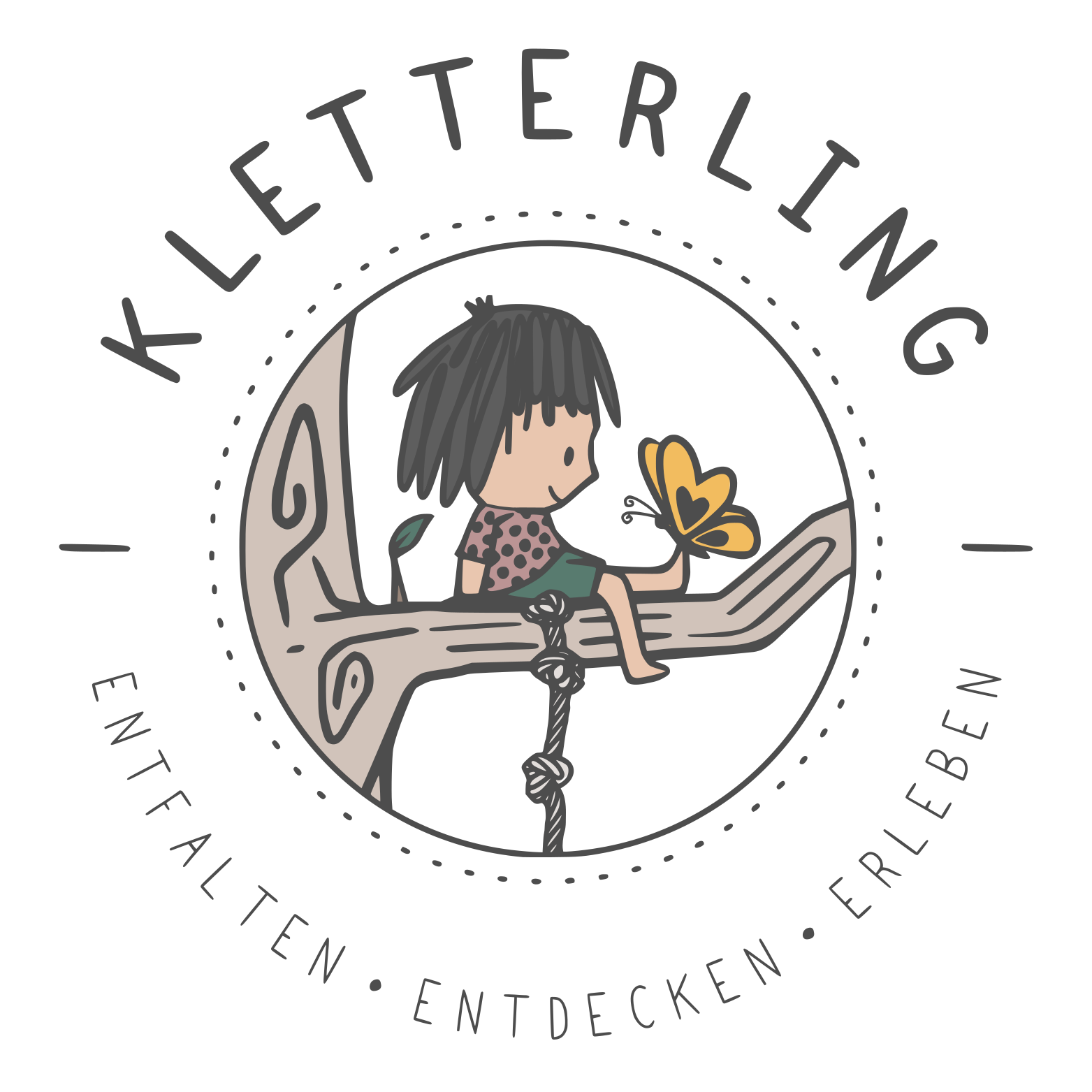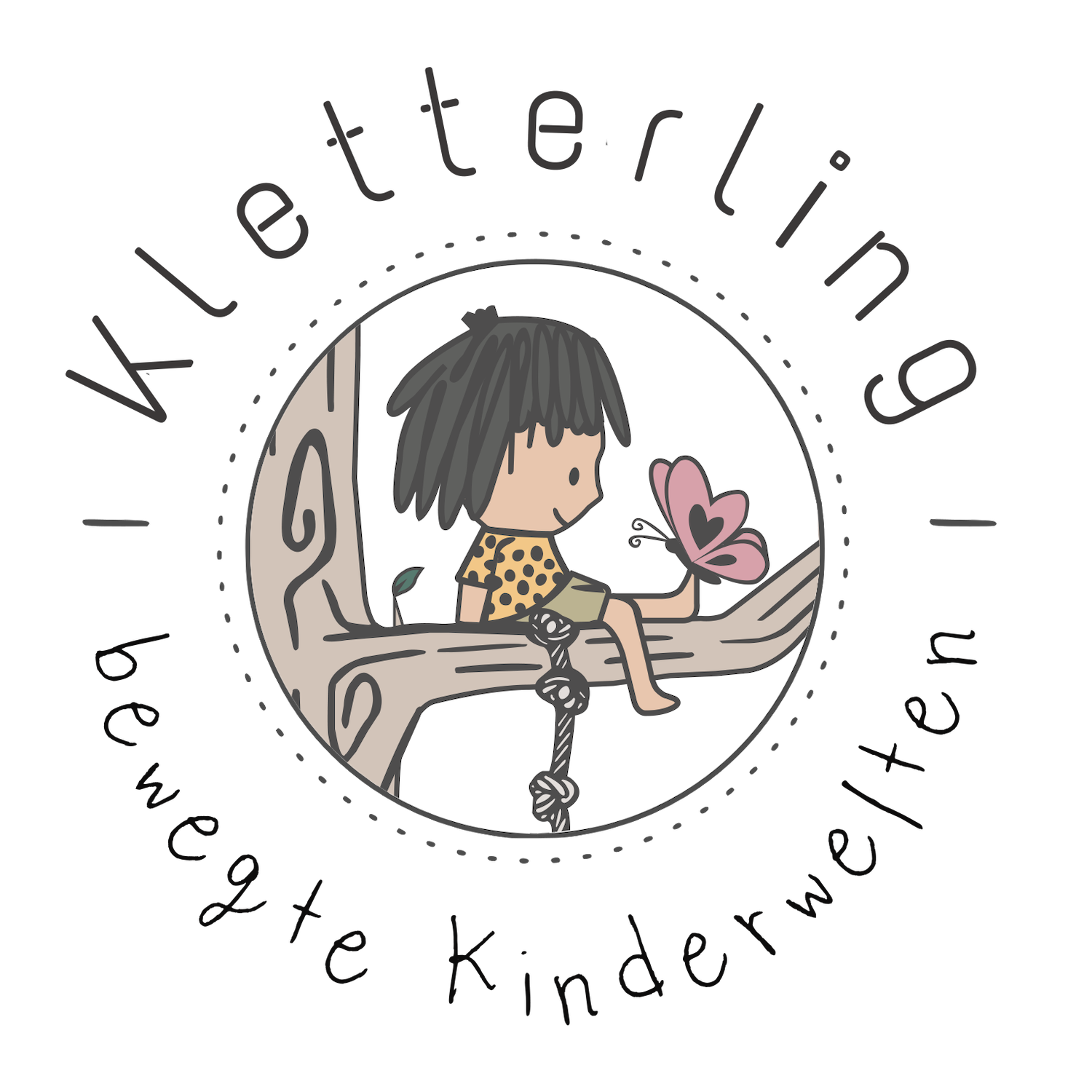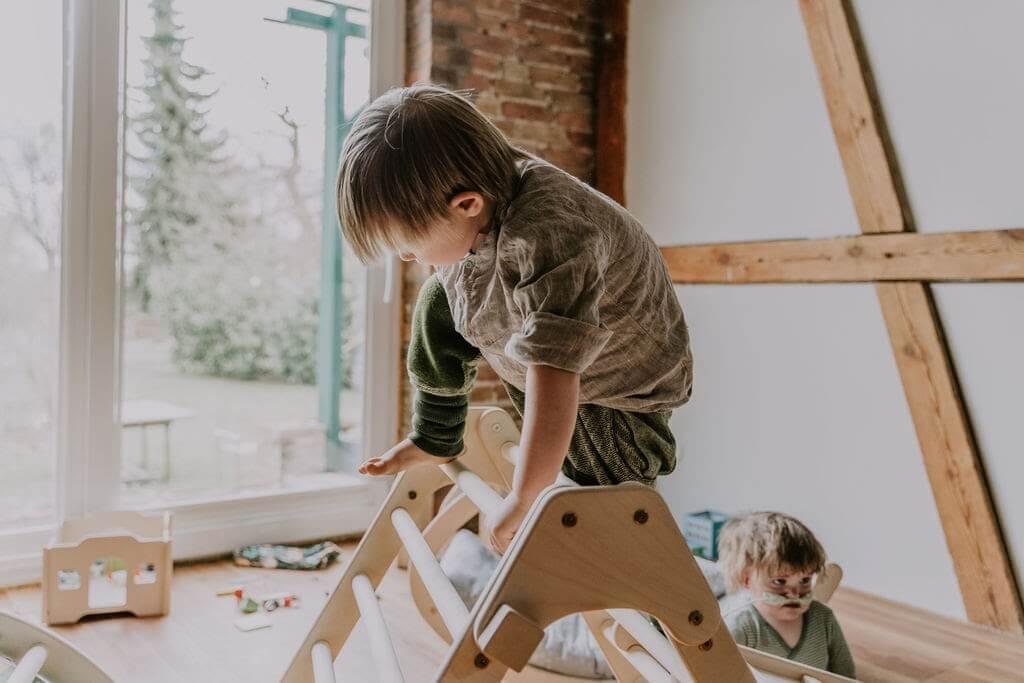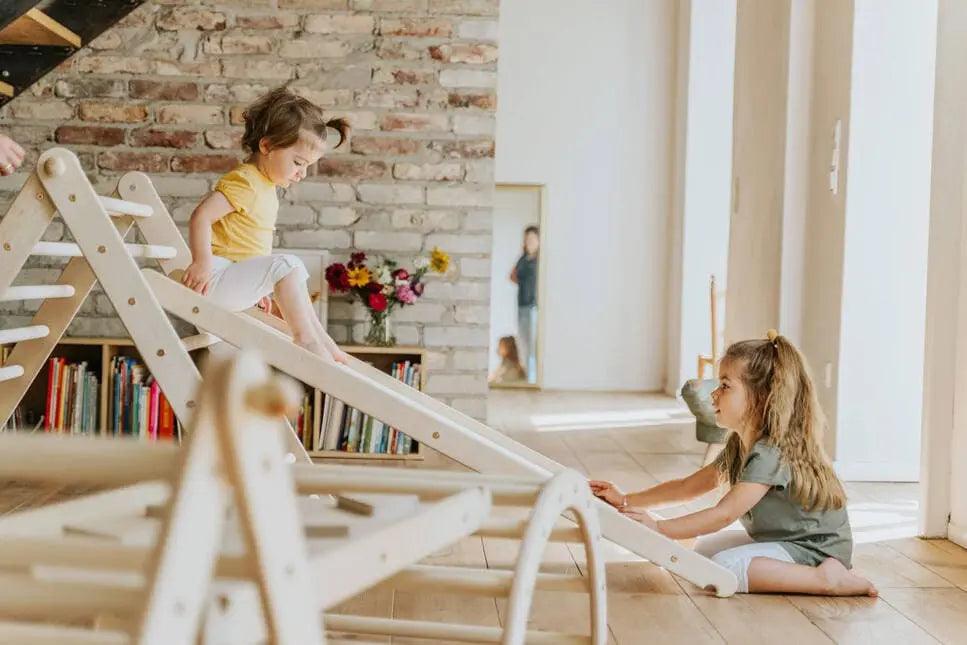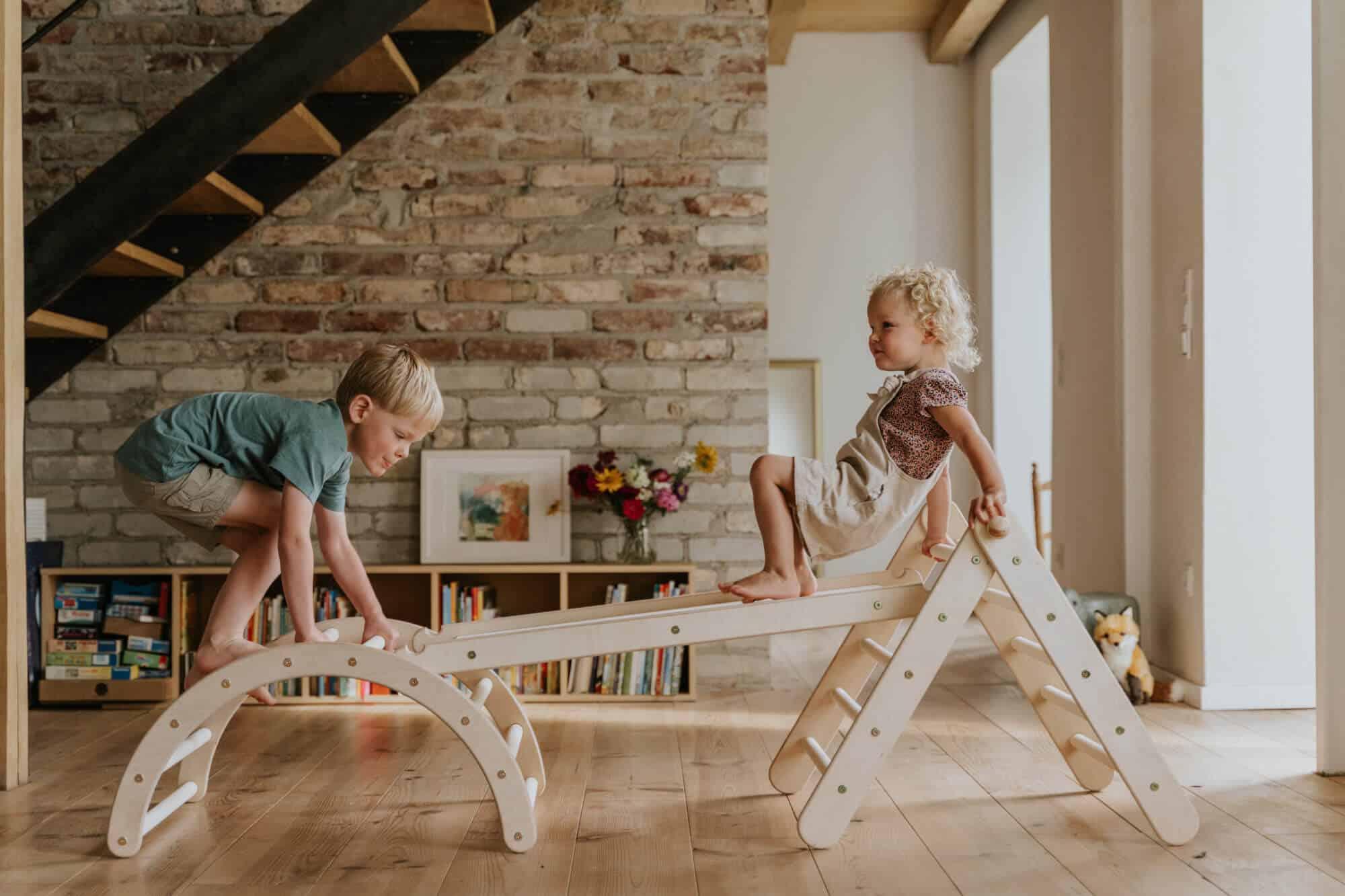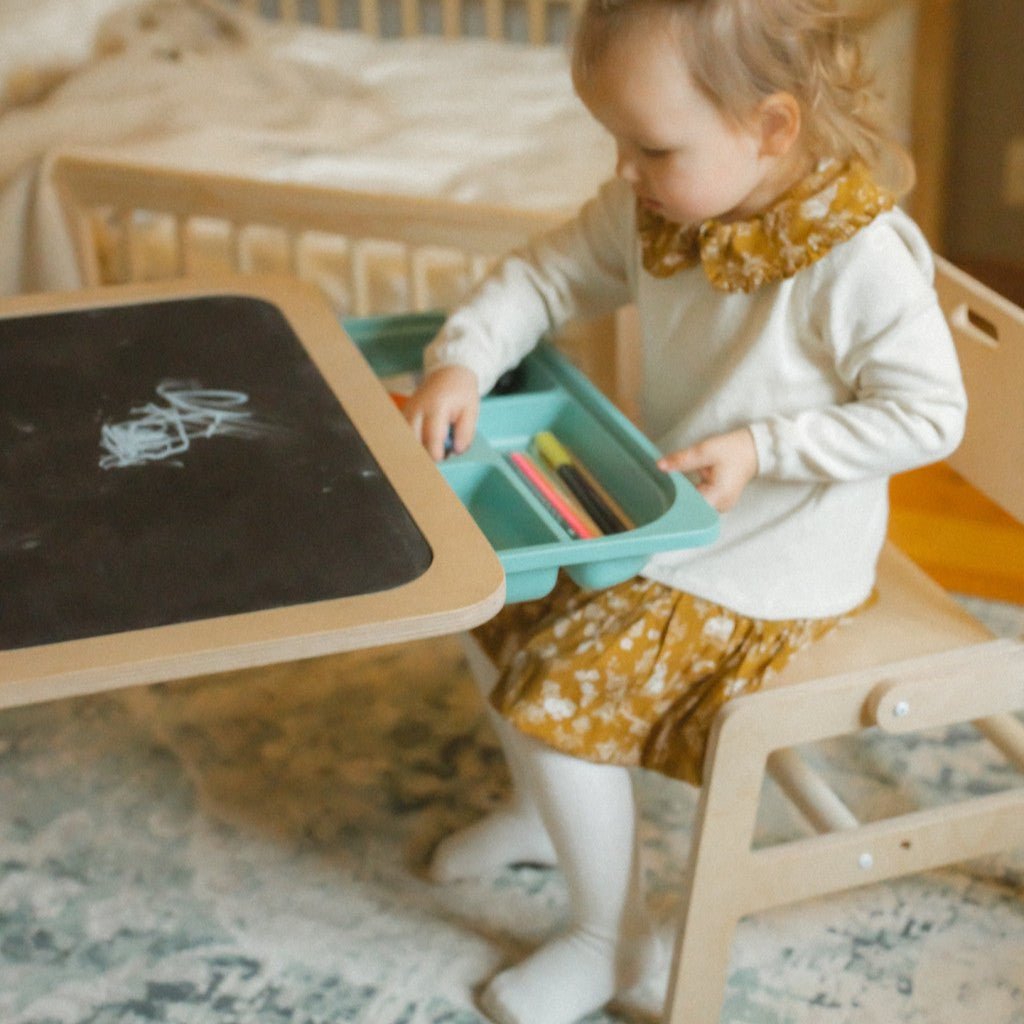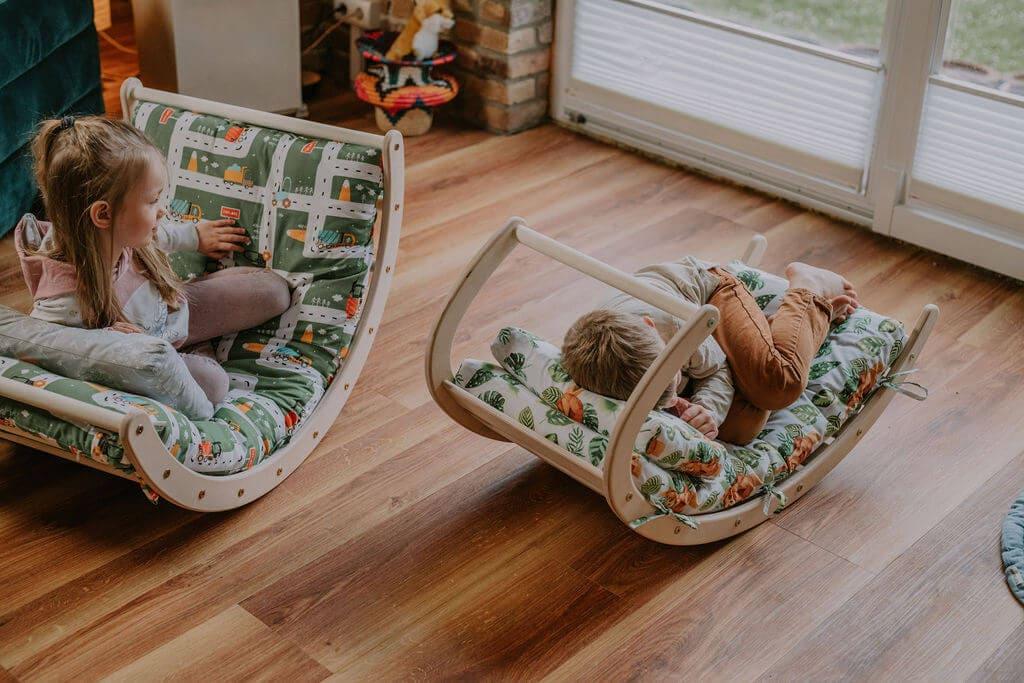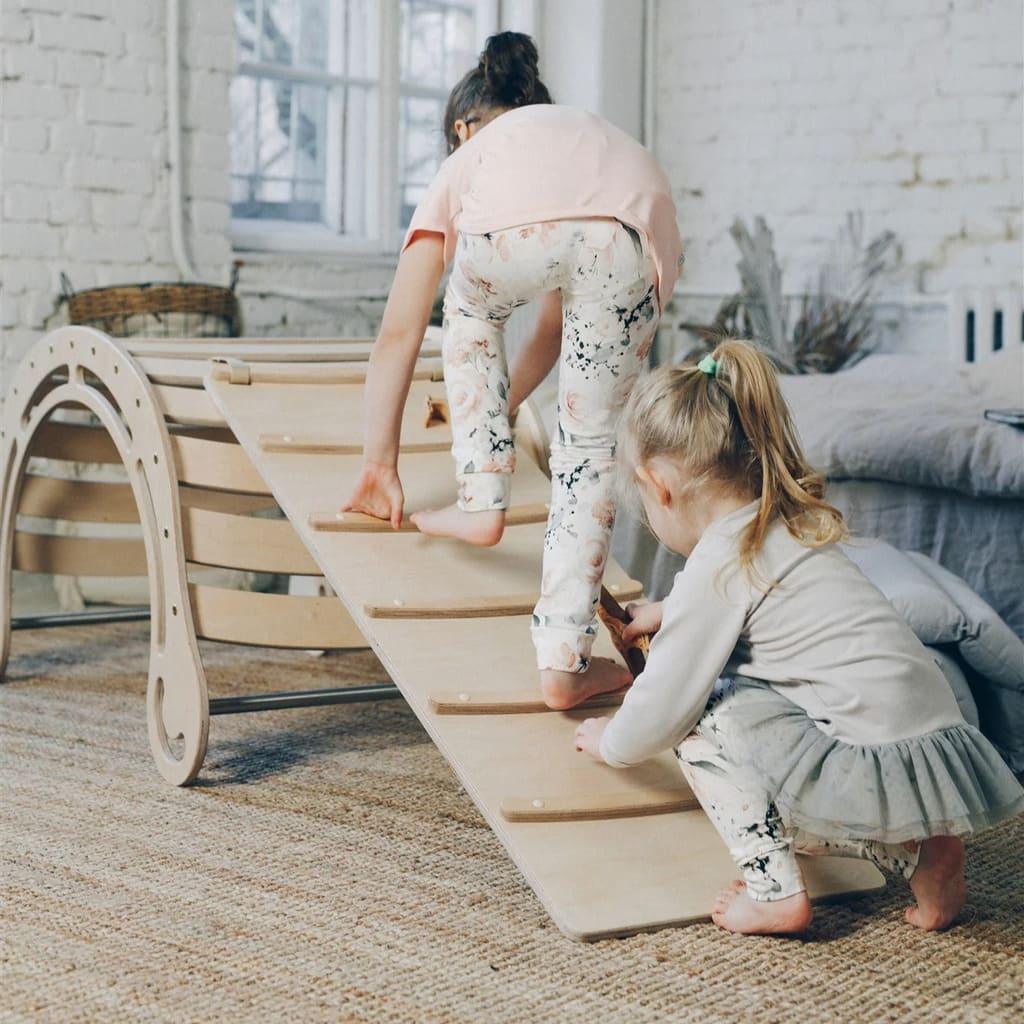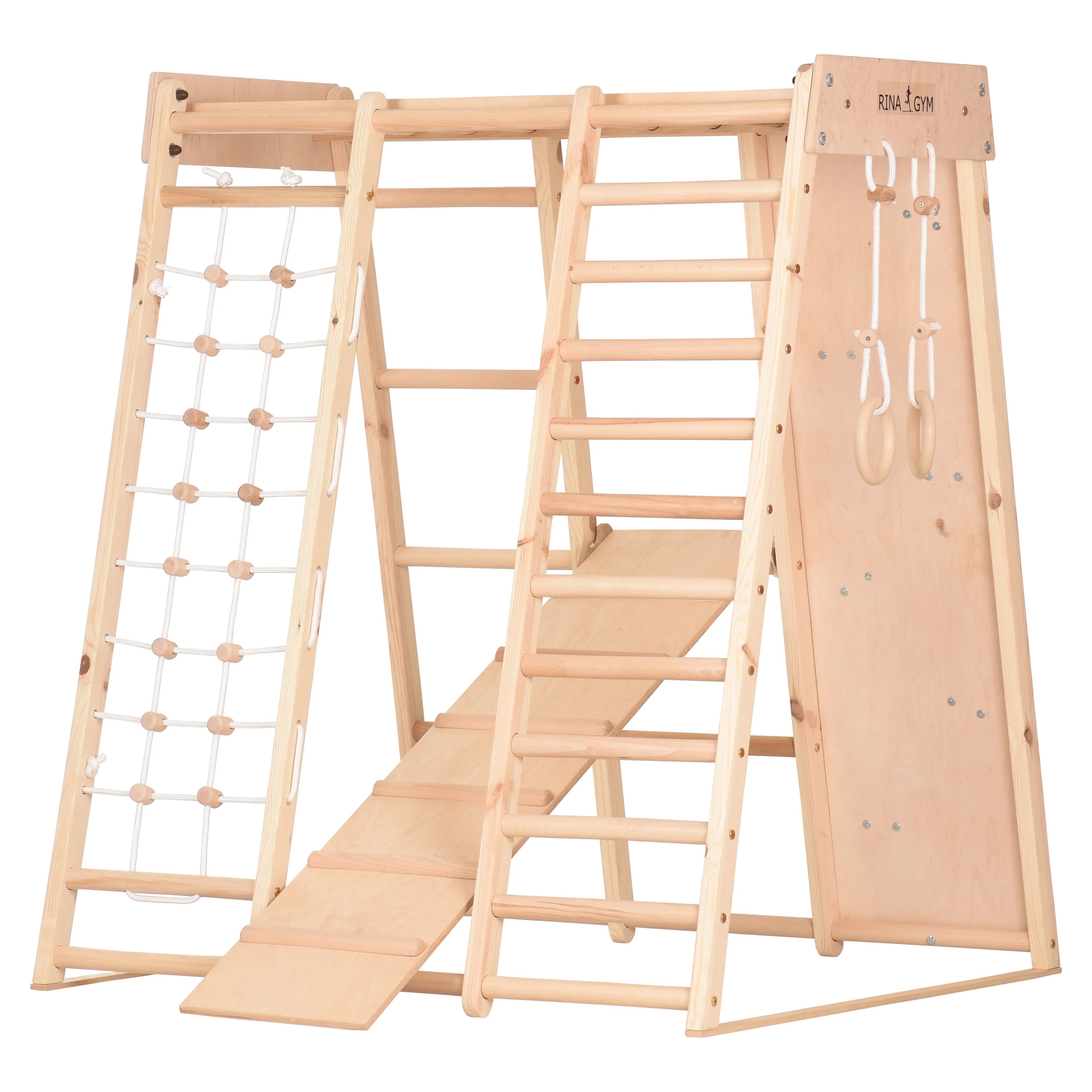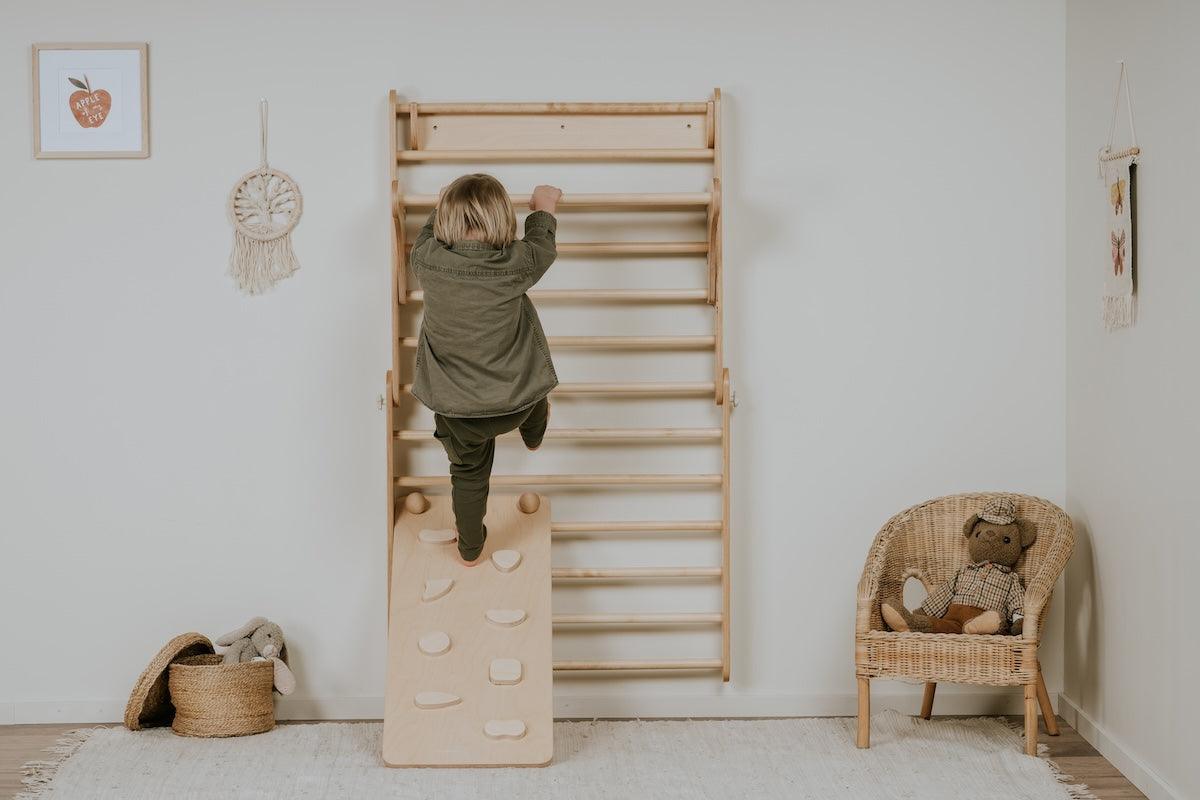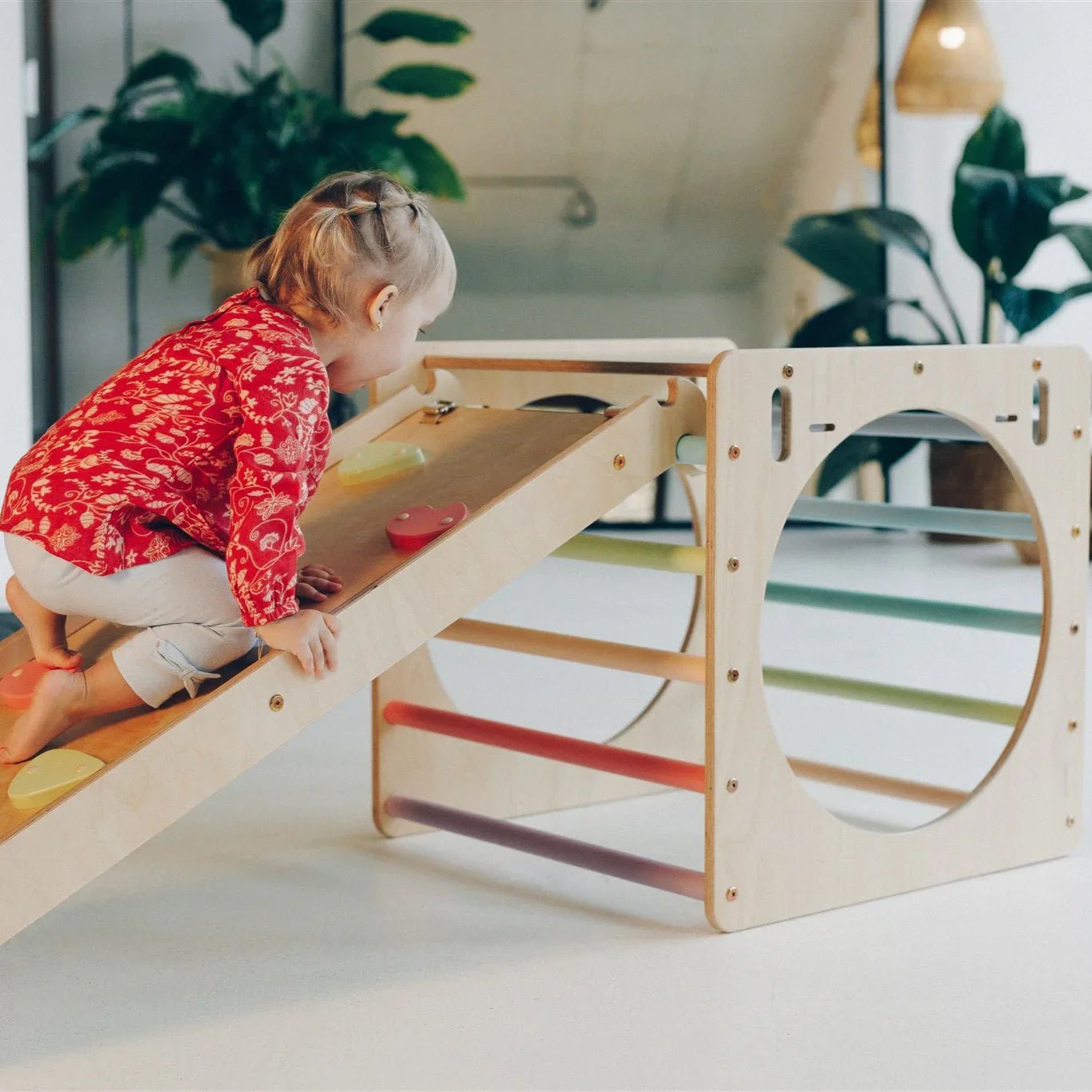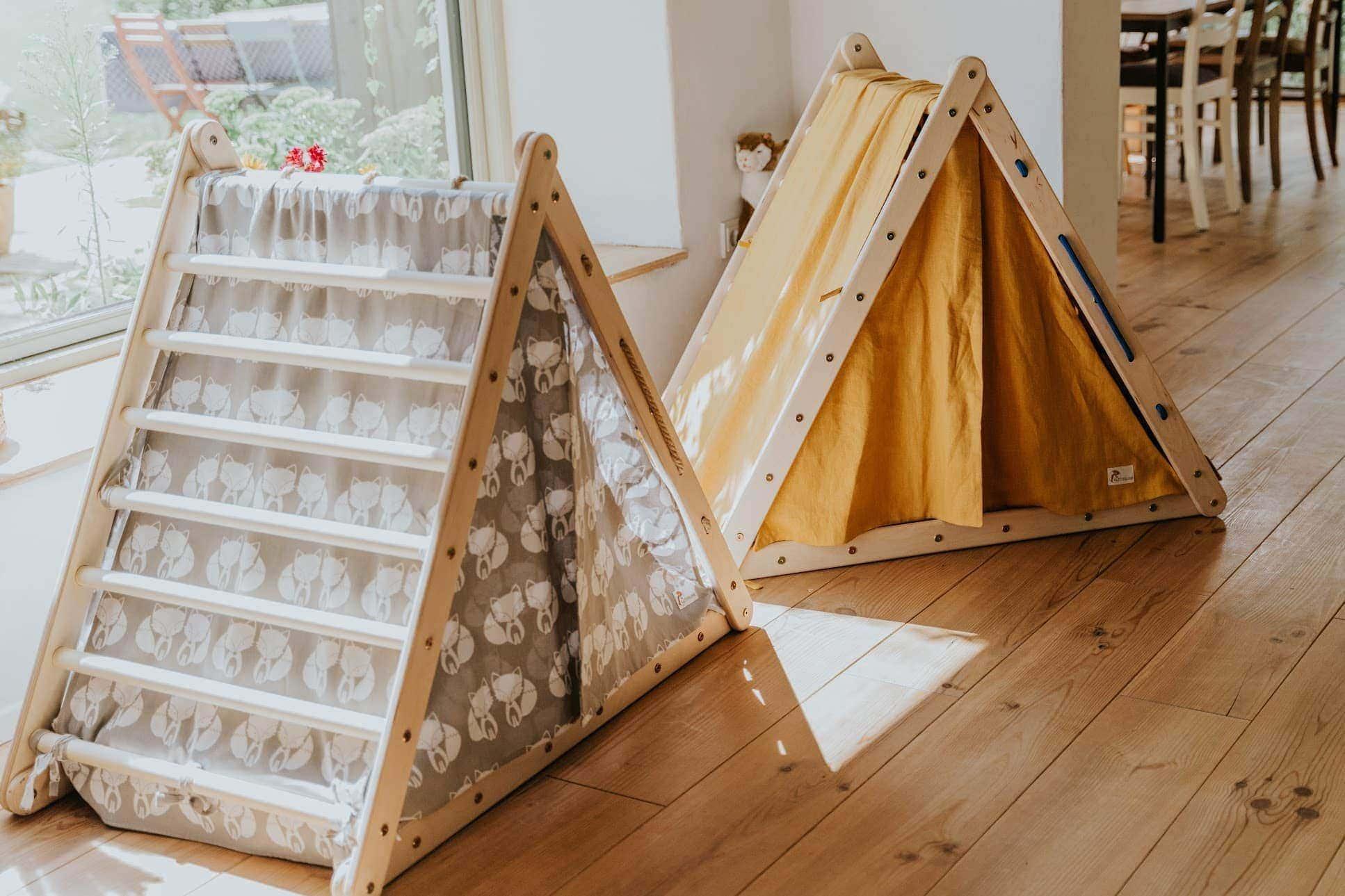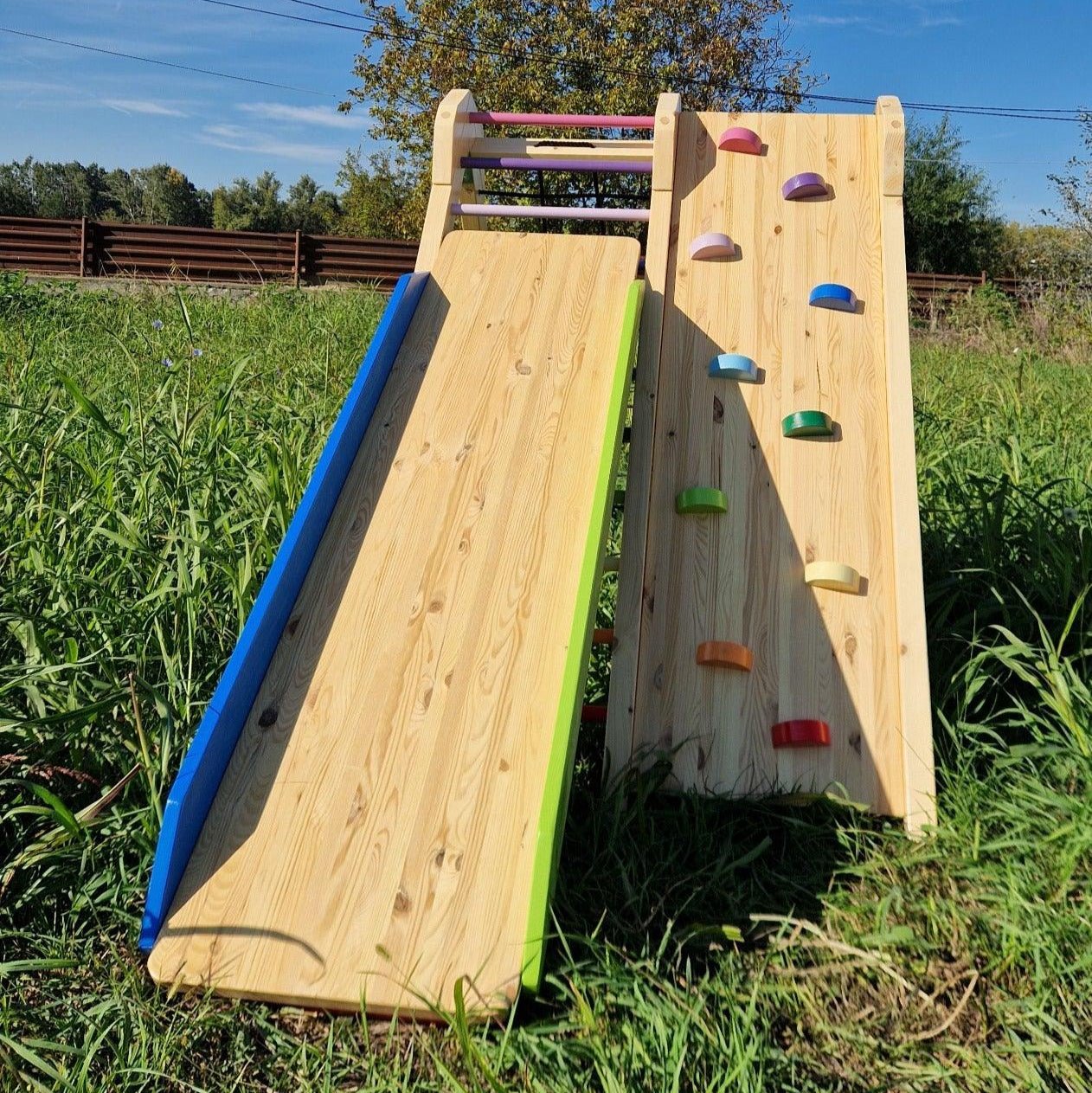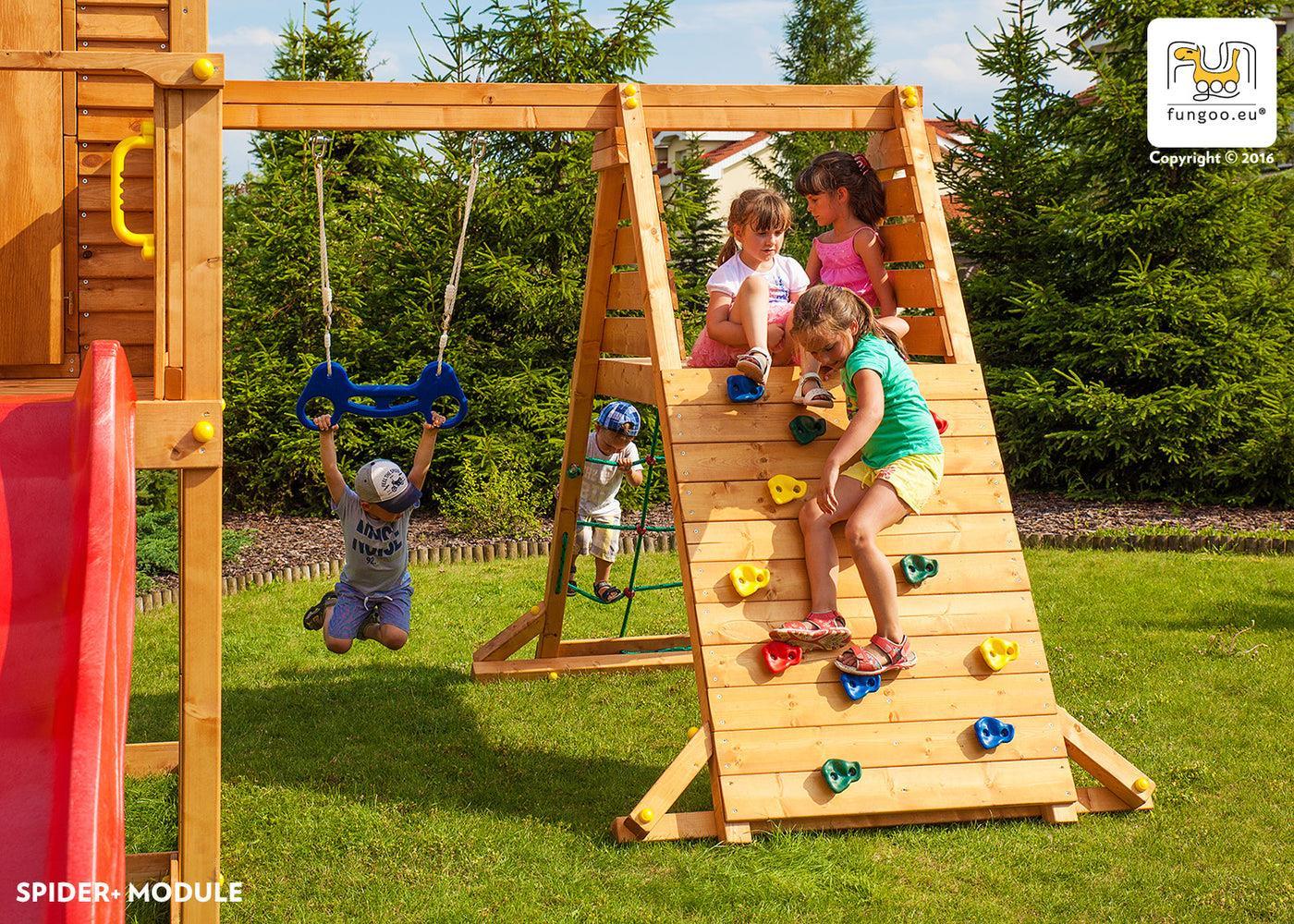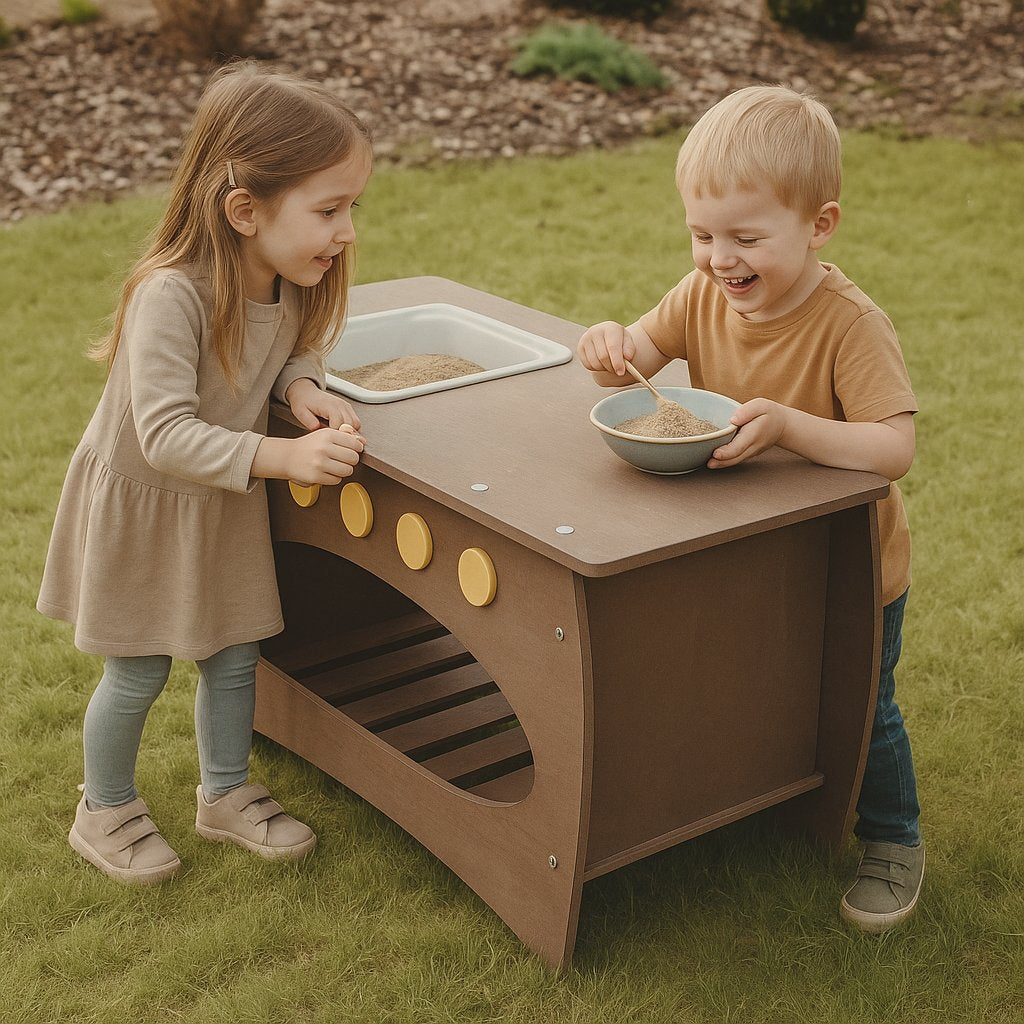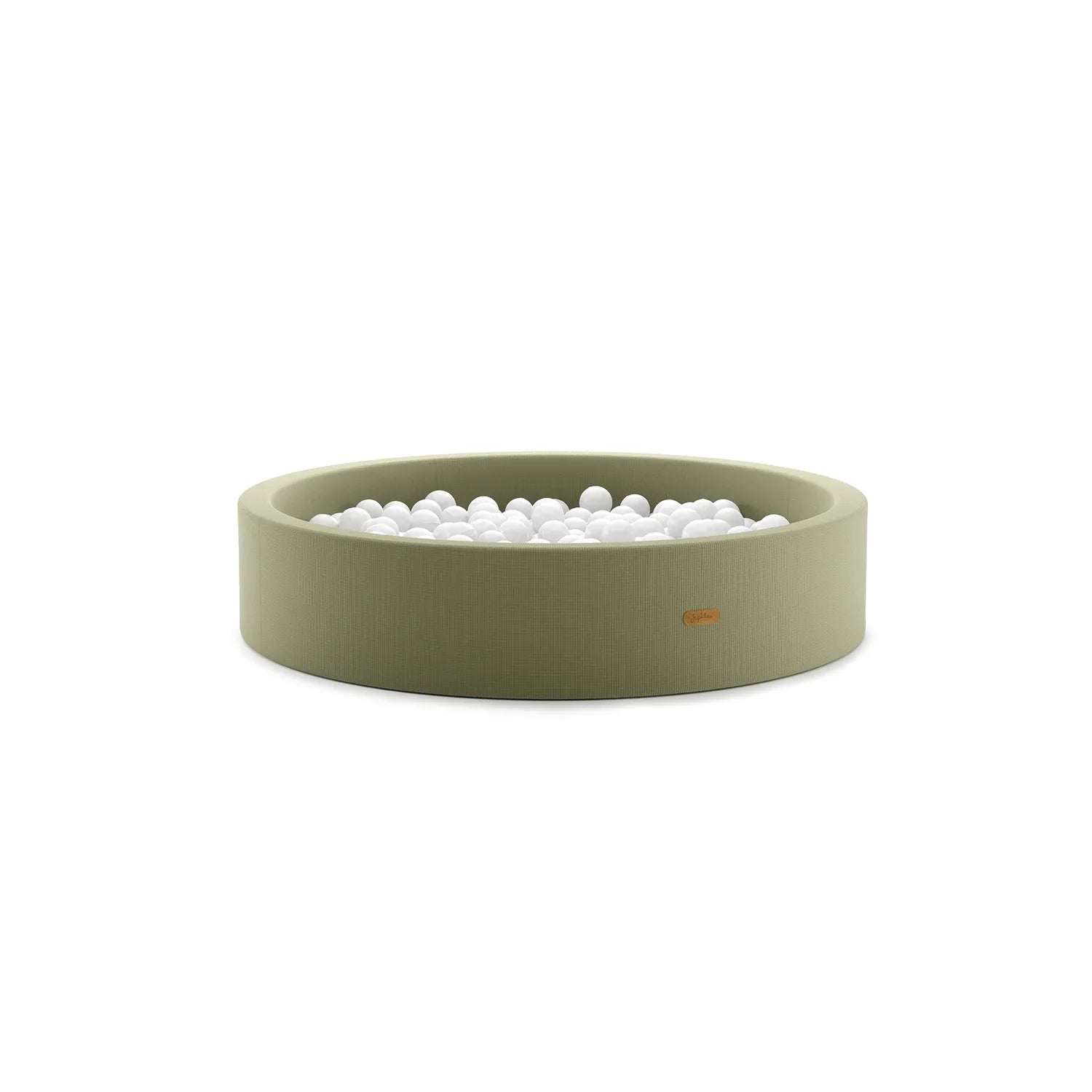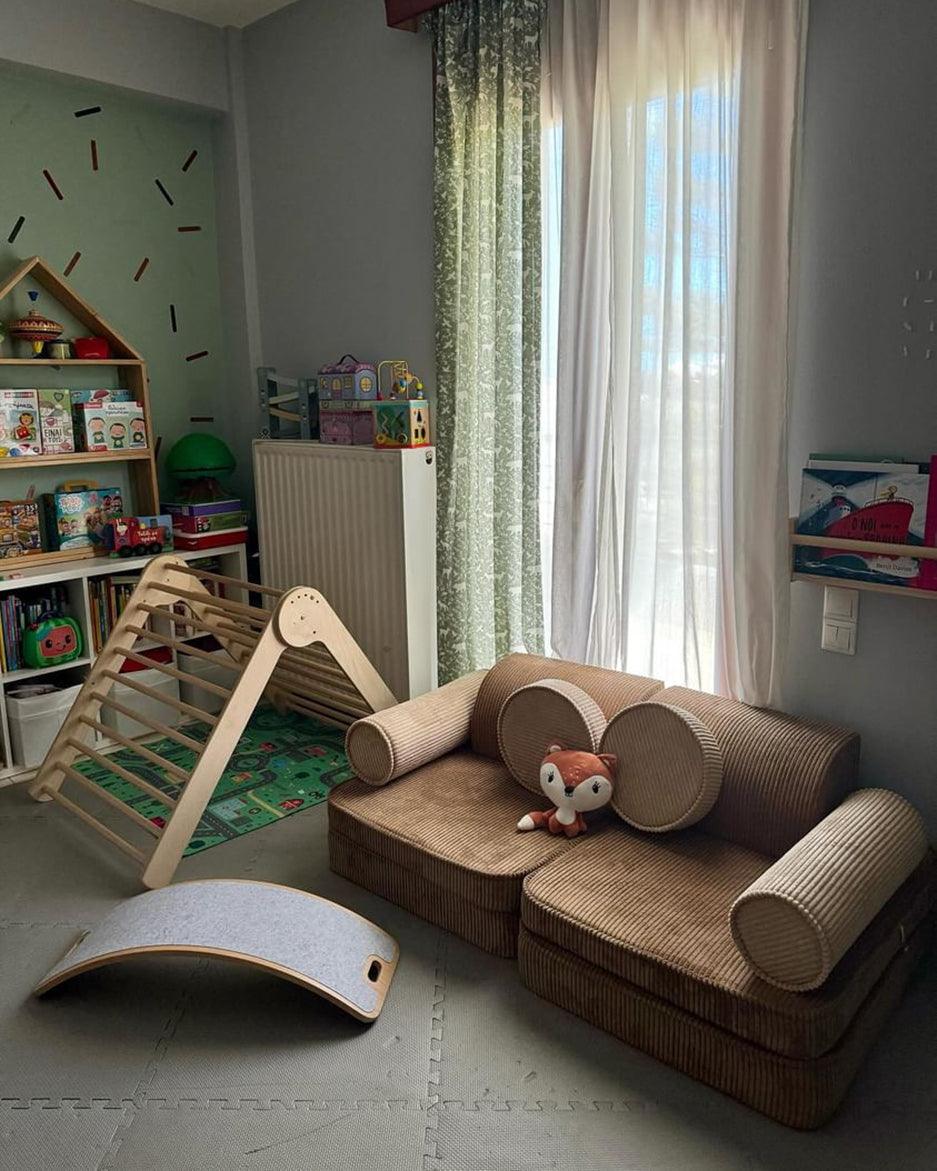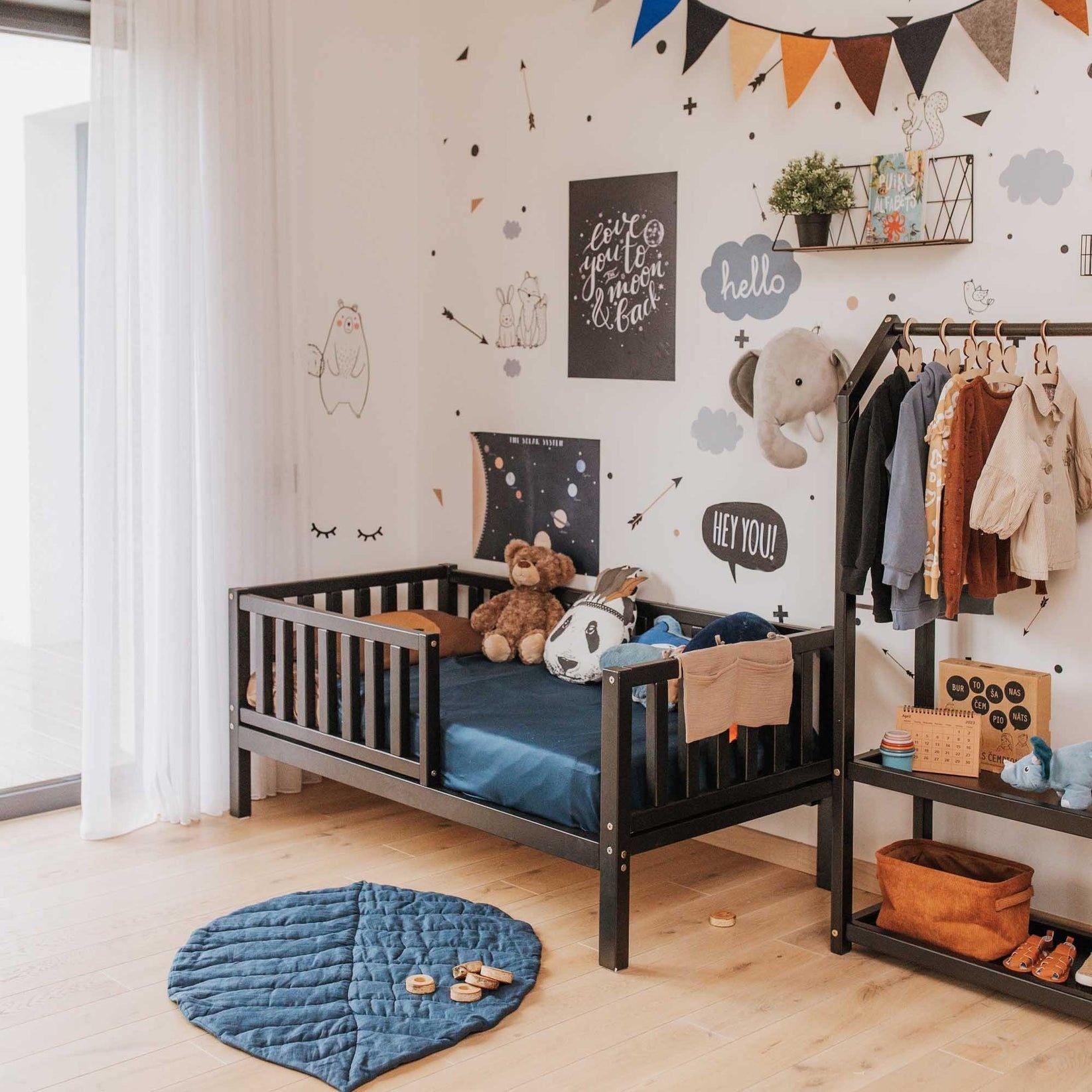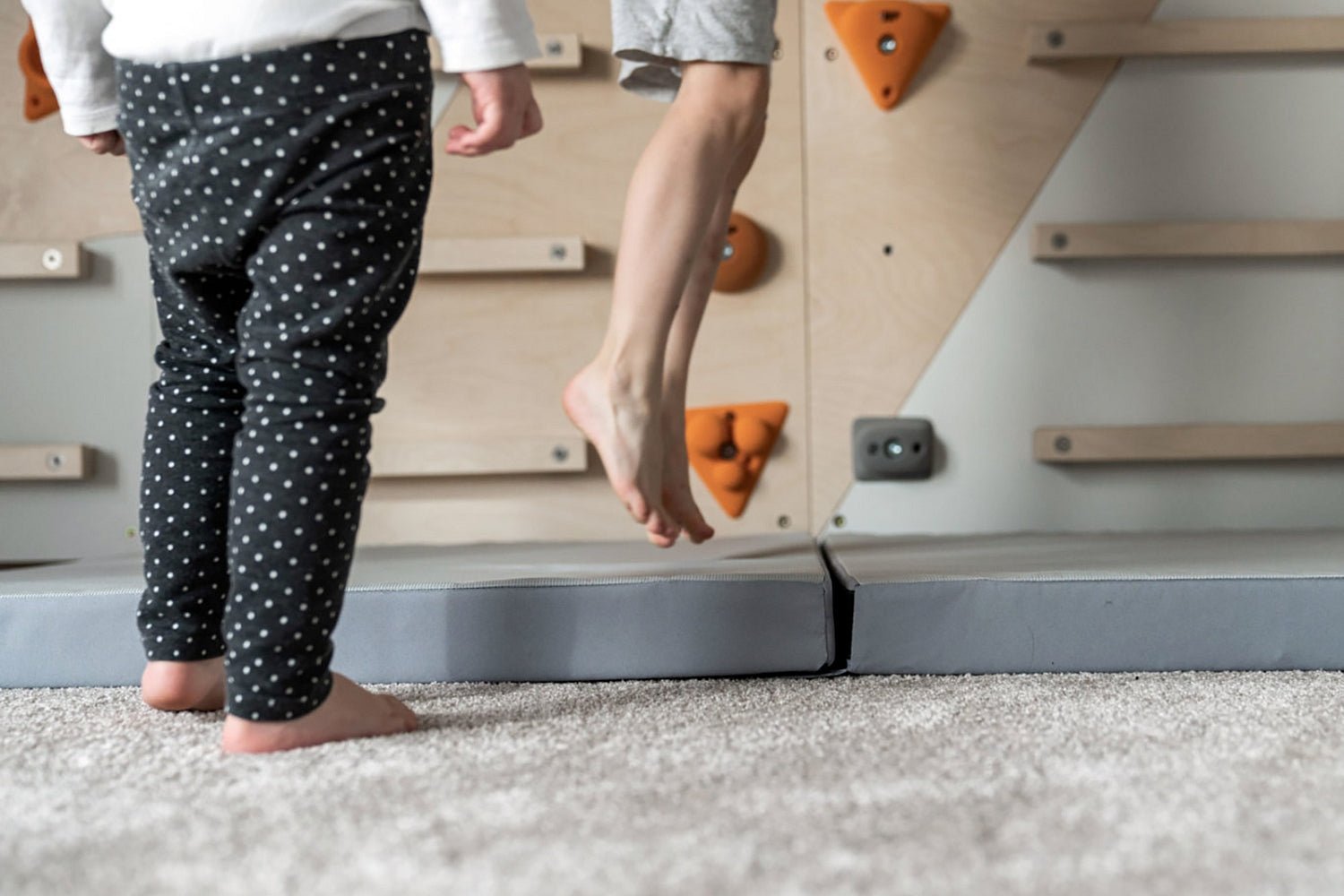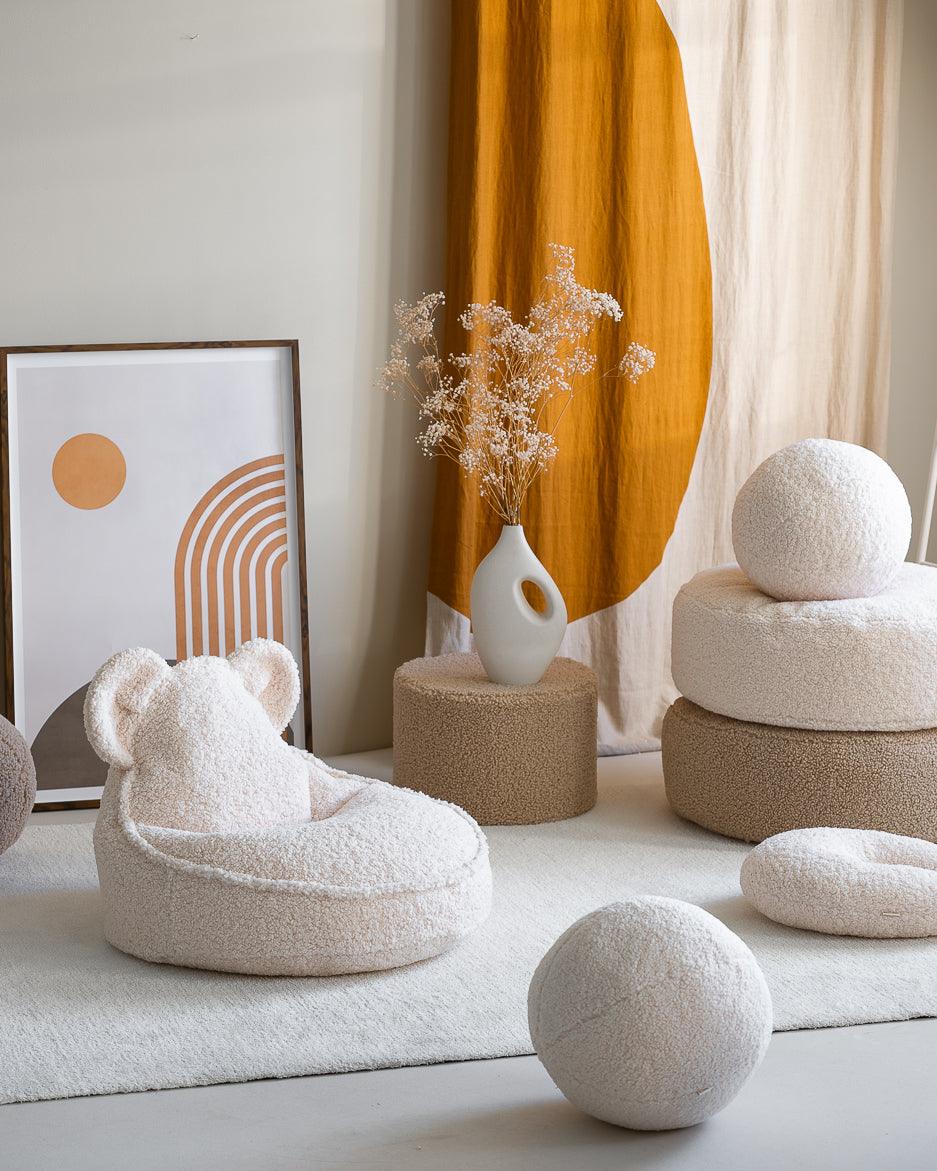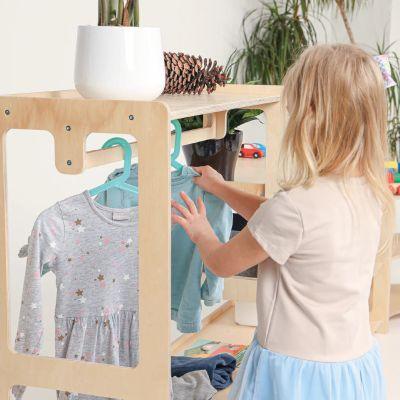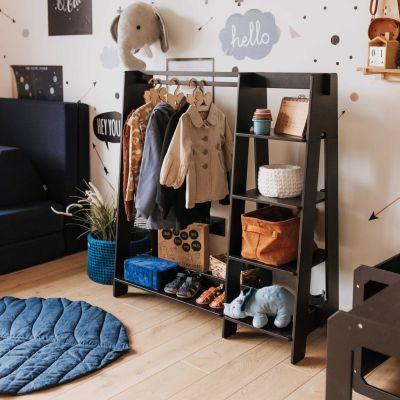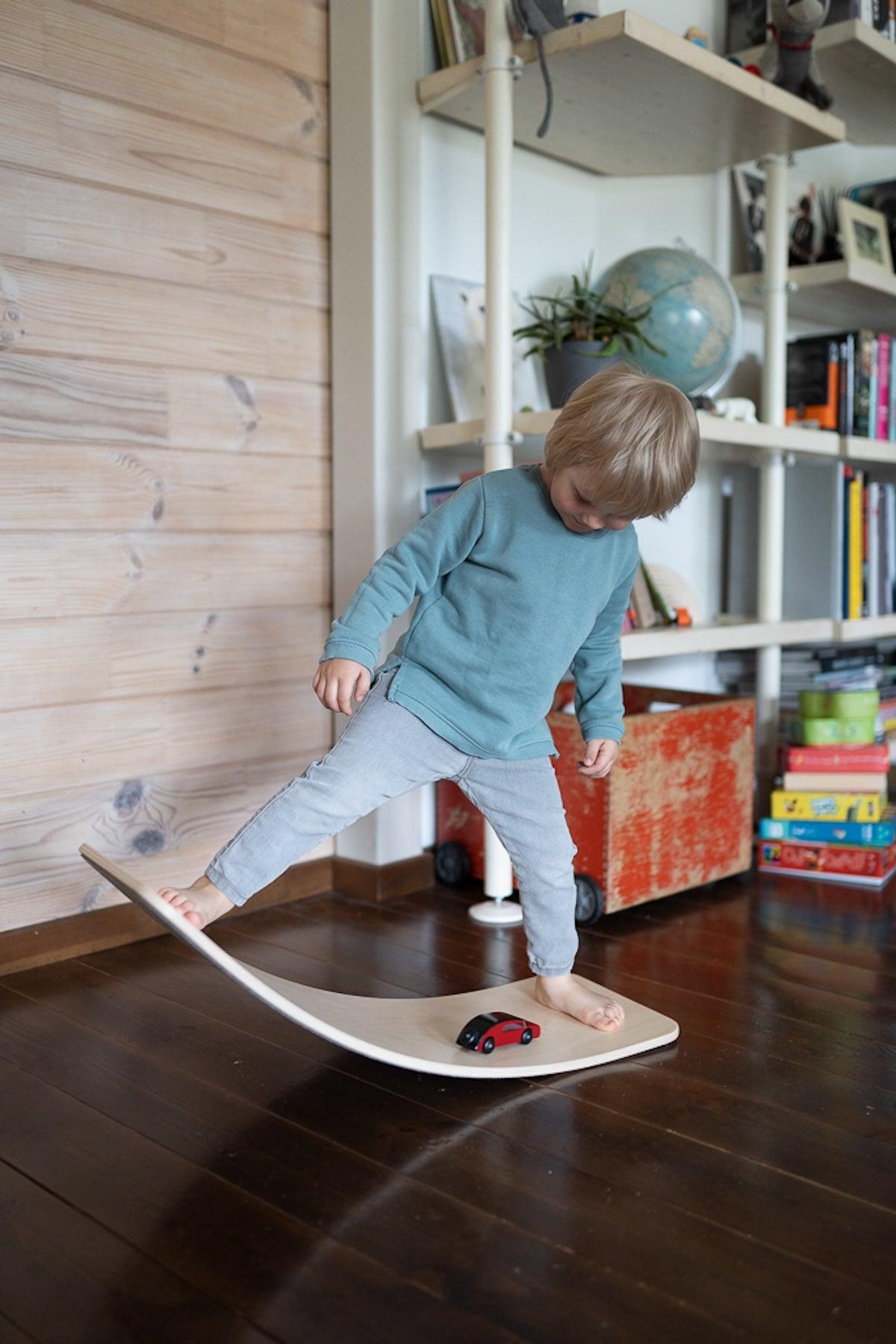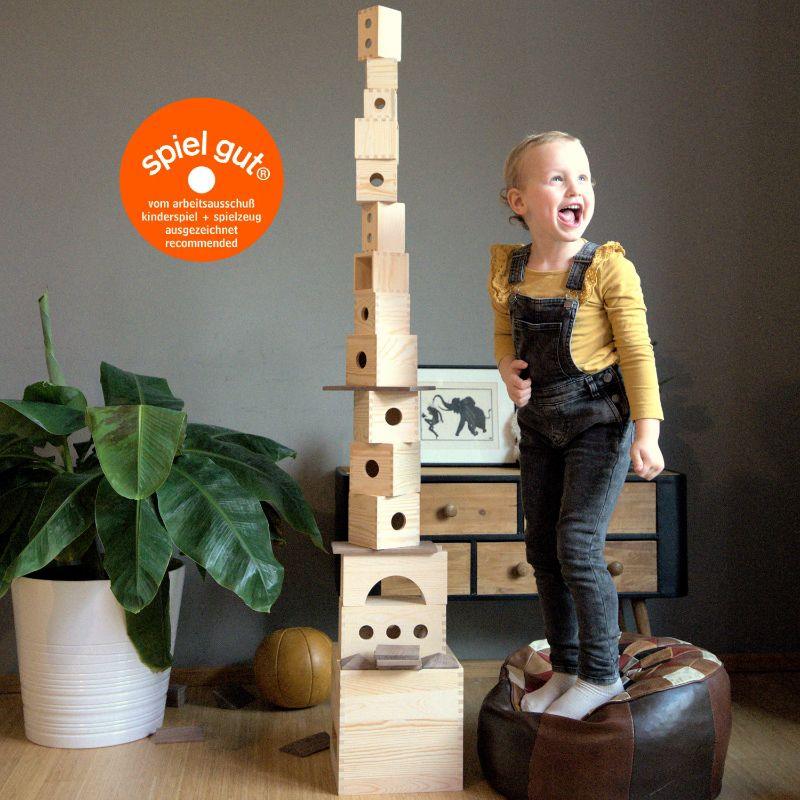Introduction: Why is exercise so important in early childhood?
Motor development in early childhood plays a fundamental role in a child's physical, mental, and emotional development. From birth, children are primed to explore their environment and build connections between sensory input and motor skills through movement. This process is crucial for a child's overall development, as it not only promotes physical strength but also influences learning and social interaction.
One of the most important reasons why exercise is so essential during this early stage of life is its ability to promote motor development. Motor skills include both gross motor skills like running, climbing, and jumping, as well as fine motor skills like grasping and balancing. Regular physical activity strengthens muscles, coordination, and balance, all of which form the foundation for later complex movement sequences.
In addition, exercise has been proven to support cognitive development. Studies show that physical activity promotes neural connections in the brain, which are essential for learning and problem-solving skills. Children who have a variety of physical activity opportunities in their daily lives benefit from improved concentration and increased self-confidence.
Social skills can also be developed through encouraging physical activity. Through climbing or playing together, toddlers learn to develop their social skills. They practice cooperating with others, resolving conflicts, and respecting their own boundaries and those of others.
Promoting active movement in early childhood lays the foundation for a healthy and balanced life.
What is a climbing triangle? Origin and concept
The climbing triangle, also known as the Pikler triangle, is a popular motor-development play and climbing device designed specifically for toddlers. It is based on the educational principles of Hungarian pediatrician Dr. Emmi Pikler, who intensively explored the importance of free movement and independent learning in early childhood. Dr. Pikler believed that children best develop their motor skills and self-confidence when they can explore their movements independently, without external constraints or guidelines.
The central concept of the climbing triangle is to create a safe environment where toddlers can test and expand their physical limits. The structure itself is a triangular structure made of sturdy wooden bars that can be climbed at various heights and angles. It is designed to adapt to the needs and abilities of toddlers and encourages them to actively climb, balance, and explore.
The design of the climbing triangle allows for a variety of play and learning opportunities. It can be combined with accessories such as slides, climbing boards, or ladders, making it even more versatile. It also promotes sensory perception, muscle strengthening, and coordination without compromising the child's natural development.
The climbing triangle originated in the 1940s and remains an indispensable part of many educational institutions, Montessori schools, and private homes. Its success lies in its simple, functional design and its universal applicability for children aged approximately six months to five years.
The role of motor development in toddlers
Motor development represents a crucial aspect of early childhood growth and lays the foundation for mobility, coordination, and independence. It encompasses both gross and fine motor skills, which develop particularly dynamically in the first years of life. While gross motor skills, such as crawling, walking, or climbing, involve larger muscle groups, fine motor activities involve more precise movements, such as grasping or handling small objects.
Motor development is significantly influenced by the environment and the promotion of movement opportunities. Research shows that children reach motor milestones faster in a stimulating environment.
"Movement is key to developing cognitive, emotional, and social skills in young children," emphasize developmental psychologists.
A structured approach to movement, such as playing with a climbing triangle, supports important developmental processes. Such play equipment encourages natural curiosity and gives toddlers the opportunity to explore and develop their movement skills independently.
The key benefits of targeted support for motor development in young children include:
Strengthening muscles and posture : Regular exercise helps build strength and balance.
Improve coordination : Toddlers learn to better coordinate movements.
Supports cognitive development : Movement activates various areas of the brain that are important for problem-solving and creativity.
Promoting self-confidence : When children overcome physical challenges, it builds their self-confidence.
The first years of life offer a crucial phase in which motor skills can be specifically supported.
How the climbing triangle supports gross motor skills
The climbing triangle, developed according to the principles of Emmi Pikler, is a multifunctional play and learning device that specifically contributes to the development of gross motor skills in toddlers. It provides a safe environment in which children can indulge their natural urge to move while simultaneously developing their motor skills.
Improve body coordination
As children use the climbing triangle, they actively develop their coordination. As they grasp, pull, and balance on the rungs, they develop improved body control. The varying heights and inclines challenge them to precisely coordinate their movements.
Strengthening the muscles
Every pull-up, climb, or dismount requires the activation of various muscle groups, especially in the arms, legs, and core. These repetitive movements contribute to strengthening the entire musculature and create a stable foundation for future physical activities.
Promoting balance
Balancing on the rungs trains their sense of balance and proprioception. Toddlers learn to shift their weight in space while maintaining body stability. This is an essential foundation for more complex motor skills like running or jumping.
Development of problem-solving skills
When climbing the triangle, children are often faced with the challenge of planning their movements independently. They decide which rung to grab, where to place their foot, or which technique to use. This process promotes not only their motor but also their cognitive development.
A climbing triangle therefore offers ideal conditions to support children in their physical development in a holistic and playful way.
Promoting self-confidence and independence through free play
The climbing triangle offers toddlers the opportunity to move freely in a safe environment and explore their own abilities. Through self-directed activities, children can gradually learn to recognize their physical limits and improve their skills without external intervention. This independent exploration fosters self-confidence, as children experience success through their own actions.
A key benefit of free play with a climbing triangle is that it allows room for error. Children can attempt to overcome obstacles while developing strategies to overcome difficulties. These processes not only develop their problem-solving skills but also teach them perseverance. The opportunity to decide for themselves when and how to approach a new challenge also promotes independence.
The climbing triangle also supports the development of decision-making skills. It offers a variety of options for playing, climbing, and balancing, from which a child can choose. This choice strengthens a sense of personal responsibility. Furthermore, it sharpens the perception of risk. Children learn to better assess dangers and minimize risks independently, for example, by taking more cautious steps.
Parents and educators play a supportive, but not dominant, role. They create the framework without directing free play. This attitude gives children the freedom to gain independent experiences. The confidence developed through such experiences also accompanies children in other areas of life and creates a solid foundation for their personal development.
Cognitive benefits from exploring and experimenting
Exploring a climbing triangle offers toddlers numerous opportunities to develop important cognitive skills. As they try to orient themselves to the various structures and coordinate movements, brain regions critical for problem-solving, logic, and creative thinking are activated.
By observing their surroundings and independently assessing how to ascend or descend the triangle, children's spatial awareness is naturally trained. Consciously planning a path promotes goal-setting and strategic thinking. In this process, children unconsciously learn to understand cause and effect—a key aspect for future thinking and learning processes.
Experimental play with the climbing triangle also provides scope for hypothesis formation. Toddlers instinctively test how tightly they need to grip something or how to shift their weight to maintain balance. Regular practice of such motor challenges leads to improved self-regulated thinking, as they discover solutions independently.
The cognitive benefits also include memory development. Children who repeatedly try out different movement sequences retain these experiences and refer back to them later. Every successful experiment builds their self-confidence, which indirectly promotes learning.
The climbing triangle also supports the development of concentration. To perform complex movements, children need to focus, block out distractions, and develop patience. Such experiences often result in an improved attention span, which is essential for many learning processes later in life. This creates a connection between physical and mental growth.
Safety and design: What parents should pay attention to when buying
The selection of a climbing triangle should be guided by two essential criteria: safety and design. These aspects ensure that the play equipment optimally supports the motor development of young children while minimizing potential risks.
Safety comes first
When purchasing a climbing triangle, the stability of the structure is crucial. Parents should ensure that the model is made of robust materials such as solid wood. Wood types such as beech or oak offer high load-bearing capacity and durability. It is also important that the climbing triangle is free of sharp edges and corners to avoid injuries.
Another key component is testing according to safety standards. Certificates such as EN 71 confirm that the play equipment is suitable for children and has been tested for harmful substances. Care should also be taken to ensure that the rungs provide a secure grip and are neither too wide nor too close together to support the child's balance and safety.
Design: Functionality meets aesthetics
In addition to safety, the design of the climbing triangle also plays an important role. Models with modular elements offer an expandable play area that can be individually adapted to the child's needs and abilities. Furthermore, the design should be child-friendly, with clean lines and appealing colors that blend harmoniously into the living space.
A well-thought-out design also makes setup and storage easier. Foldable climbing triangles are especially practical for families with limited space.
The combination of safety precautions and a functional, attractive design makes a climbing triangle a long-term and valuable companion for motor development.
The climbing triangle in everyday life: creative play possibilities
The climbing triangle offers countless opportunities for children to actively encourage their creativity and movement. Its multifunctional design allows it to be seamlessly integrated into everyday life and provides varied play and learning opportunities.
A key benefit of the climbing triangle is its promotion of motor development. Children can use it to climb, balance, or crawl underneath. These activities train their gross motor skills while strengthening body control. With an additional slide or boards, the climbing triangle encourages a wider range of movement.
Top creative game ideas:
Dollhouse or hideaway : Children often use the frame as a den by hanging blankets or cloths over it. This creates a cozy retreat or an imaginative dollhouse.
Climbing course : Together with other play equipment, the climbing triangle can become part of an indoor course, inspiring children to play active games.
Bridge or tunnel : With a little imagination, the climbing triangle becomes a bridge that a “raging river” can be crossed over, or a tunnel that adventurers have to crawl through.
Theme worlds : The climbing triangle can take on different roles in role-playing games – for example as a pirate ship, castle or mountain peak.
In addition to physical activity, the climbing triangle also offers educational benefits. Children learn to assess risks, resolve conflicts playfully, and express creativity through free play. It also promotes social interaction, especially when several children play simultaneously and create scenarios together.
Thanks to its versatility, the climbing triangle remains a timeless addition that enriches everyday life and gives children space to develop.
Montessori principles and the climbing triangle: A perfect combination
The climbing triangle, also known as the Pikler triangle, is an excellent play and learning tool that fits seamlessly into the Montessori pedagogy. The Montessori method, coined by Maria Montessori, is based on the fundamental principles of self-exploration, independence, and a prepared learning environment. The climbing triangle also supports these principles and promotes the natural development of toddlers.
A central aspect of Montessori education is perceiving the child as an active designer of their own learning processes. The climbing triangle provides a safe platform on which toddlers can freely experiment. It allows them to independently develop motor skills by climbing, sliding, and trying out different movement sequences. Without any predefined instructions, important skills such as balance, coordination, and muscle strength are developed.
In addition, the climbing triangle stimulates children's intrinsic motivation. Montessori materials are designed to stimulate children's interest and encourage their curiosity. The simple yet flexible design of the climbing triangle invites use in a variety of ways. It can be set up at different angles or combined with additional elements such as a slide to further stimulate creativity.
Another advantage is the focus on safety, which is embedded in both the Montessori philosophy and the design of the climbing triangle. Children can independently assess risks in a controlled environment. This not only strengthens their self-confidence but also their problem-solving skills, another central component of the Montessori method.
The interplay of Montessori principles with the climbing triangle creates an environment in which children have the opportunity for holistic development. With each step, children are given the opportunity to face new challenges and expand their skills through play.
Long-term benefits for physical and social development
A climbing triangle not only offers immediate fun, but also contributes significantly to the sustainable development of physical and social skills. Its versatile uses help toddlers learn essential skills that remain important far beyond toddlerhood.
Physical development
Repeated use of a climbing triangle promotes the development of fine and gross motor skills. Climbing the bars not only strengthens muscles but also improves arm and leg coordination. These movement experiences have a positive effect on overall posture and balance. Children learn precise control of their body movements, which expands their perception of space and depth. Furthermore, regular activity also increases physical endurance, which is important for sports activities or everyday tasks later in life.
Social skills
In addition to the physical benefits, the climbing triangle contributes to social development. Playing with other children provides toddlers with their first experiences of social interaction. They learn to be considerate of one another, overcome challenges together, and resolve conflicts peacefully. The play equipment also allows them to practice teamwork, for example, when children encourage one another or work together on an obstacle course.
Promoting self-confidence
Another social aspect is the strengthening of self-confidence. When a child successfully masters a previously seemingly difficult climbing height, they gain a strong sense of achievement and self-confidence. Overcoming such challenges teaches patience and the willingness to work hard at a task—qualities that are essential later in life.
The long-term benefits of the climbing triangle lie in the promotion of physical-motor as well as social and emotional growth.
Conclusion: The climbing triangle as an indispensable play equipment for toddlers
The climbing triangle is a versatile piece of play equipment that addresses numerous developmental areas in young children. It promotes motor development by offering children the opportunity to practice their coordination, balance, and muscle strength in a playful way. While climbing, children develop the ability to experiment with movement sequences and explore their physical limits, which strengthens their self-confidence and independence.
A significant benefit of the climbing triangle is that it supports both physical and cognitive skills. Combining climbing, balancing, and playing promotes problem-solving as children learn to overcome obstacles and find solutions to movement tasks. Free play on a climbing triangle, in particular, allows toddlers to develop their creativity and discover new uses.
Another important feature is the safety of the design. High-quality climbing triangles are made from child-safe materials and offer a stable structure that minimizes the risk of injury. Furthermore, their compact design makes them ideal for indoor use, allowing them to be used even in inclement weather.
The versatility of the climbing triangle is also reflected in its adaptability. Many models are foldable or can be combined with accessories such as slides, allowing them to be optimally adapted to the growing needs and interests of children. This makes them a long-lasting companion during toddlerhood.
Last but not least, playful climbing with the climbing triangle also promotes social interactions as children play together and motivate each other. The combination of educational value and the joy of movement makes the climbing triangle a valuable addition to any home.
